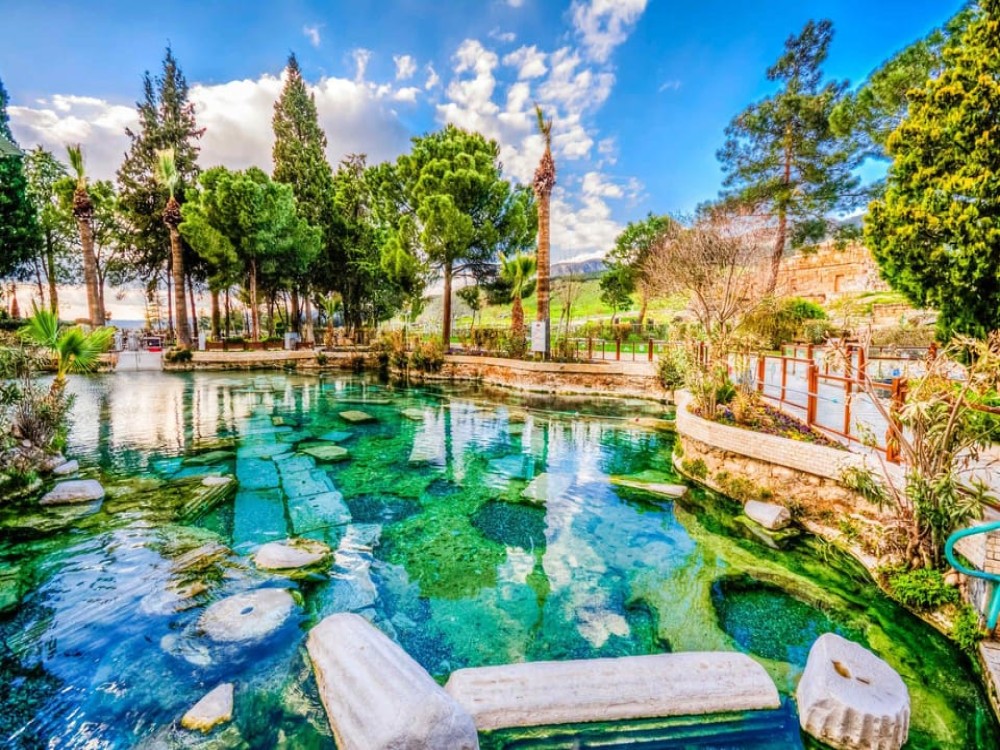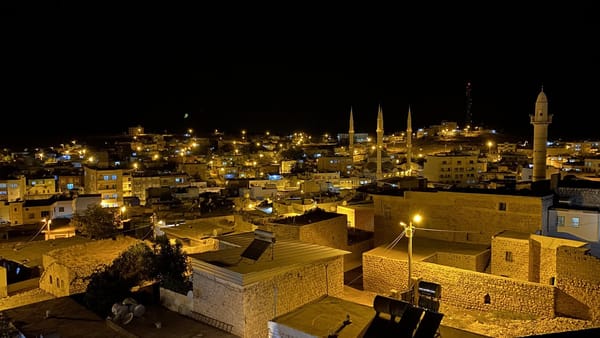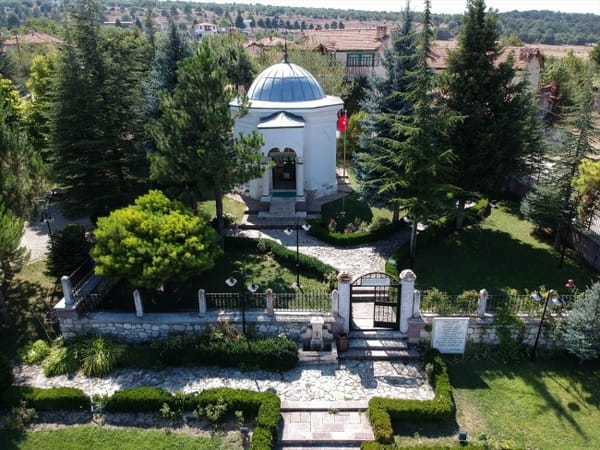Swimming in Cleopatra's Pool Pamukkale: The Ultimate Unforgettable Experience Guide

Imagine floating in crystal-clear, warm waters, sunlight dappling through the leaves, with colossal Roman columns resting serenely beneath you. This isn't a dream; it's the reality of swimming in Cleopatra's Pool at Pamukkale, a truly unforgettable Turkish experience. Many travelers arrive with visions of this idyllic scene, but the reality can sometimes fall short due to unexpected crowds, hidden fees, or simply not knowing how to best navigate this ancient wonder. Our aim is to ensure your visit to Cleopatra's Pool is not just memorable, but seamlessly perfect, delivering the magic you expect. This guide provides everything you need, from the whispers of legend to the hard facts of logistics, to make your Pamukkale experience truly unforgettable. We'll help you navigate the nuances of this unique thermal pool, ensuring you get the most out of your historical dip.
Unveiling Cleopatra's Pool: History, Legend, and the Enchanting Waters
What Exactly Is Cleopatra's Pool? (The Antique Pool)
Cleopatra's Pool, also known as the Antique Pool or Sacred Pool, is a unique thermal spring located within the ancient Hierapolis archaeological site at Pamukkale. It's crucial to understand that this is not one of the famous natural travertine terraces Pamukkale is renowned for. Instead, it's a natural thermal pool that formed in a sinkhole, famously adorned with submerged Roman columns and artifacts. These ancient remnants, toppled by earthquakes centuries ago, now create a surreal underwater landscape, offering a truly distinctive swimming environment where history literally lies beneath the surface. It’s a man-made extension of the natural thermal system, designed for relaxation and therapeutic benefits in antiquity.
The Legend of Cleopatra vs. Historical Reality
The romantic allure of Cleopatra's Pool stems from a popular legend suggesting that the famous Egyptian queen, Cleopatra, and her lover Mark Antony bathed in its warm, healing waters. This tale adds a layer of mystique and historical intrigue to the experience, painting a picture of ancient royalty seeking rejuvenation. However, historical and archaeological evidence suggests a different story. While the pool was indeed part of the extensive thermal bath complex of the ancient Roman city of Hierapolis, there's no concrete proof that Cleopatra herself ever visited. The columns found submerged in the pool likely fell into the water due to a significant earthquake that struck the region in the 7th century AD. Appreciating the pool's authentic history as a vital part of Hierapolis's thermal infrastructure, and the geological events that shaped its present form, adds a different, yet equally profound, dimension to its charm.
The Healing Waters: Mineral Composition and Therapeutic Properties
The waters of Cleopatra's Pool are a significant draw, not just for their warmth but for their purported therapeutic properties. This thermal water is rich in minerals, including calcium, magnesium, bicarbonate, iron, and sulphate. For centuries, these waters have been believed to offer a range of health benefits. Visitors often report that soaking in the mineral-rich environment may help alleviate symptoms associated with rheumatism, arthritis, and other joint ailments. It is also thought to be beneficial for certain skin conditions, improve circulation, and provide a sense of deep relaxation and stress relief. While these benefits are widely acknowledged and traditionally sought after, it’s important to approach them with the understanding that they are based on anecdotal evidence and traditional use, rather than definitive medical claims.
Mastering Your Visit: Essential Practicalities & Logistics
Getting There: Location and Access
Cleopatra's Pool is conveniently situated within the expansive Hierapolis-Hierapolis-Pamukkale UNESCO World Heritage site. To reach it, you'll typically enter through the main Pamukkale entrance. From there, it’s a pleasant walk through the ancient city ruins towards the pool area, often located near the Hierapolis Museum. The path is clearly signposted, guiding you through the archaeological wonders. If you’re arriving by public transport or tour, your itinerary will usually include a direct route to the pool complex. Its central location within Hierapolis makes it an integral part of exploring the broader ancient city.
The "Separate Fee" Trap: Understanding Costs
This is a critical piece of information that can catch many visitors by surprise: Cleopatra's Pool has its own entrance fee, which is separate from the main Pamukkale and Hierapolis site entrance ticket. This is a common point of confusion, and failing to budget for it can lead to disappointment.
- Pamukkale/Hierapolis Entrance Fee: This is the primary ticket required to access the travertine terraces and the ancient city of Hierapolis. Expect this to be the larger portion of your entry cost, typically in the range of €30-35 TL (Turkish Lira), though prices can fluctuate.
- Cleopatra's Pool Swimming Fee: An additional fee is charged to actually enter and swim in Cleopatra's Pool. This fee can vary, but it's generally around €10-30 TL or sometimes presented as part of a package. It’s always best to check the current rates at the ticket counter upon arrival.
- Lockers/Changing Rooms: While changing facilities are available, lockers for securing your belongings often incur a small, separate fee.
Understanding these distinct charges upfront is vital for budgeting and avoiding any unpleasant surprises. The fees contribute to the maintenance and preservation of both the ancient site and the unique swimming experience.
Opening Hours & Best Times to Visit (Beat the Crowds!)
Cleopatra's Pool generally welcomes visitors from 8:00 AM to 7:00 PM during the summer months (April to October) and 8:00 AM to 5:00 PM or 5:30 PM in the winter (November to March). It's important to note that the last entry is typically allowed about 30-45 minutes before closing time.
However, the real secret to an unforgettable experience is timing. To truly beat the crowds and enjoy the serene atmosphere, aim for:
- Early Morning: Arrive shortly after opening (ideally before 10 AM). You'll have a much more peaceful experience with fewer people.
- Late Afternoon: The period after 4 PM can also be less crowded as day-trippers begin to depart.
Time of Year: For the best overall experience with milder weather and fewer tourists, consider visiting during the shoulder seasons: April to June and September to October. July and August are peak tourist months and will be significantly more crowded.
What to Bring: Your Essential Packing List
To ensure a comfortable and enjoyable swim, pack these essentials:
- Swimsuit: Obvious, but crucial.
- Towel: A quick-dry microfiber towel is ideal for saving space and drying efficiently.
- Change of Clothes: For after your swim.
- Waterproof Bag/Pouch: Essential for protecting your phone, wallet, and keys while you're in the water.
- Sunscreen, Hat, and Sunglasses: Even with some shade from trees, the sun can be intense.
- Water Bottle: Staying hydrated is key, especially in the Turkish sun.
- Snacks: While there are facilities, bringing your own snacks can be convenient.
- Swim Shoes (Optional): If you prefer extra protection for your feet on the submerged ruins, though check if they are permitted.
Facilities & Amenities: What to Expect
Within the Cleopatra's Pool complex, you'll find essential facilities to enhance your visit:
- Changing Rooms: Dedicated areas are available for visitors to change into and out of their swimwear.
- Lockers: Lockers are provided for securing your valuables. As mentioned, there is usually a small fee for their use. It is highly recommended to use these rather than leaving belongings unattended.
- Showers: Facilities for rinsing off after your swim are typically available.
- Restrooms: Standard restroom facilities are accessible within the complex.
- Food & Drink: Small cafes or kiosks might be available for purchasing refreshments, but options can be limited. It’s wise to bring your own water and snacks.
Elevating Your Experience: Tips for an Unforgettable Dip
Strategy for Crowd Avoidance: The Art of Timing
As reiterated, timing is your most potent weapon against crowds. Arriving at opening time grants you a precious window of relative tranquility. The pool is often at its most serene in the early morning hours. If you can’t make it early, the late afternoon offers another opportunity, as tour groups and day visitors start to disperse. Visiting during the shoulder seasons (spring and autumn) significantly reduces the overall crowd density compared to the peak summer months. If your visit falls during peak hours (11 AM - 4 PM), consider exploring other parts of Hierapolis first, such as the theatre or necropolis, and returning to the pool later in the afternoon for a potentially less congested experience.
Cleopatra's Pool vs. Travertine Pools: Know the Difference
It's vital to distinguish between Cleopatra's Pool and the iconic white travertine terraces of Pamukkale.
- Cleopatra's Pool (Antique Pool): This is a swimmable thermal pool filled with warm, mineral-rich water. It features submerged Roman columns and artifacts, offering a unique historical immersion. It requires a separate fee and can get crowded.
- Travertine Pools: These are the natural, tiered calcium carbonate formations that Pamukkale is famous for. Visitors can wade through the shallow pools of cooler water, but swimming is strictly prohibited to protect the delicate formations. These are generally included with the main Pamukkale entrance ticket, though access to certain areas might be restricted.
Understanding this distinction ensures you have the correct expectations and can plan your visit accordingly, experiencing the unique appeal of each part of the Pamukkale site.
Navigating the Ruins Underwater: A Gentle Approach
When you immerse yourself in Cleopatra's Pool, remember you are swimming amongst history. Show respect for the ancient site by:
- Not Touching or Disturbing Submerged Columns: Avoid leaning on, climbing, or moving the ancient artifacts. They are fragile and part of the historical heritage.
- Moving Deliberately: Swim gently and avoid roughhousing or excessive splashing that could stir up sediment or damage the historical context.
- Photography: Use waterproof cases for your phone or consider a GoPro. Capture the unique underwater beauty responsibly.
Common Mistakes to Avoid
- Underestimating Fees: Not budgeting for the separate Cleopatra's Pool swimming fee.
- Ignoring Opening Hours: Arriving too late or too early, missing the best times.
- Visiting Mid-day: Getting caught in the peak crowd hours, diminishing the experience.
- Leaving Valuables Unattended: Utilize the lockers provided, as crowded tourist spots can be targets for petty theft.
- Disturbing Ruins: Lack of respect for the historical site's integrity.
- Not Bringing Essentials: Forgetting swimwear, towels, or adequate hydration.
- Confusing Pools: Expecting to swim in the natural travertine terraces instead of the designated Antique Pool.
Frequently Asked Questions (FAQs) - Capture Featured Snippets
Can you swim in Cleopatra's Pool Pamukkale?
Yes, absolutely! Swimming is the primary activity at Cleopatra's Pool, offering a unique opportunity to bathe in warm, mineral-rich waters surrounded by ancient ruins.
What is the entrance fee for Cleopatra's Pool Pamukkale?
There is an additional fee to swim in Cleopatra's Pool, separate from the main Pamukkale/Hierapolis site entrance fee. While prices can fluctuate, expect it to be around €10-30 TL. Always check on-site for the most current rates.
What are the opening hours for Cleopatra's Pool Pamukkale?
The pool typically opens around 8:00 AM and closes between 5:00 PM and 7:00 PM, depending on the season. Last entry is usually about 30-45 minutes before closing.
What are the health benefits of swimming in Cleopatra's Pool?
The mineral-rich thermal waters are believed to offer benefits for rheumatism, skin conditions, circulation, and stress relief, though these are based on traditional use and anecdotal evidence.
What should I bring when swimming in Cleopatra's Pool?
Essentials include a swimsuit, towel, change of clothes, sunscreen, hat, sunglasses, a waterproof bag for valuables, and a water bottle.
Is Cleopatra's Pool crowded?
Yes, it can be very crowded, particularly between 11 AM and 4 PM. Visiting early in the morning or late in the afternoon, or during the shoulder seasons, is highly recommended to avoid the peak crowds.
Can you swim in the Pamukkale travertine pools?
No, swimming is prohibited in the natural travertine terraces to preserve them. You are only permitted to wade in designated areas.
Making Your Pamukkale Experience Truly Unforgettable
Beyond the Pool: Exploring Hierapolis
While Cleopatra's Pool is a major highlight, the surrounding Hierapolis ancient city offers much more to explore. Dedicate time to wander through the remarkably preserved Roman theater, the vast necropolis (ancient cemetery), the Martyrium of St. Philip the Apostle, and the Hierapolis Archaeology Museum, which houses artifacts found on-site. A comprehensive visit to Hierapolis truly enriches the understanding and appreciation of the entire Pamukkale complex. Consider this your internal link to a deeper exploration: (geziyosun.com/hierapolis-ancient-city-guide).
Combining Cleopatra's Pool with the Travertines
For a complete Pamukkale experience, plan your day strategically. You might start by exploring the dazzling white travertine terraces, perhaps in the cooler morning hours. Then, head to Cleopatra's Pool for a relaxing and historically immersive swim. Alternatively, enjoy the pool first and then explore the ancient city and travertines. Whichever order you choose, ensure you allocate sufficient time for both. For more on planning your broader trip, explore our comprehensive (geziyosun.com/pamukkale-travel-guide).
Photography Tips for Stunning Shots
To capture the magic of Cleopatra's Pool, focus on its unique elements: the interplay of sunlight on the warm, clear water, the majestic submerged columns, and the ancient ruins framing the scene. A waterproof camera or a reliable phone case is essential for capturing shots from within the water. Experiment with different angles to highlight the depth and the historical context. Early morning or late afternoon light often provides the most dramatic and beautiful photographic opportunities.
Swimming in Cleopatra's Pool at Pamukkale offers a magical blend of historical immersion, therapeutic relaxation, and natural wonder. By understanding the practicalities, planning your timing wisely, and respecting the ancient site, you can transform a good visit into an truly unforgettable experience. Armed with this comprehensive guide, you're ready to dive into history and create lasting memories.
Have you visited Cleopatra's Pool? Share your unforgettable moments or any tips you discovered in the comments below! For more on discovering Turkey's unique thermal wonders, check out our guide to (geziyosun.com/turkey-thermal-springs).


